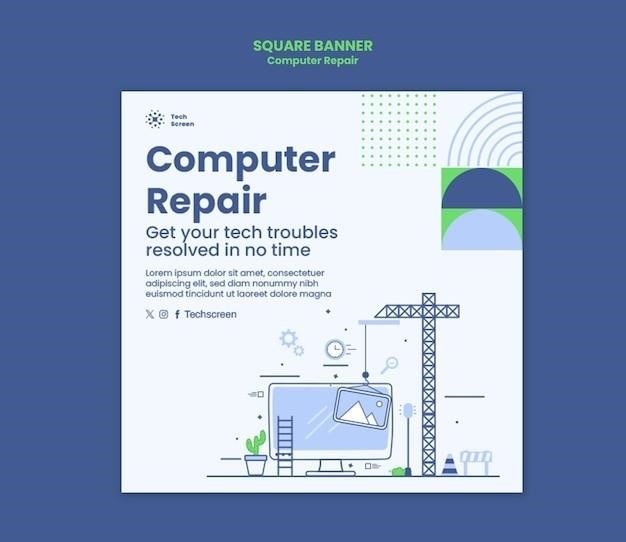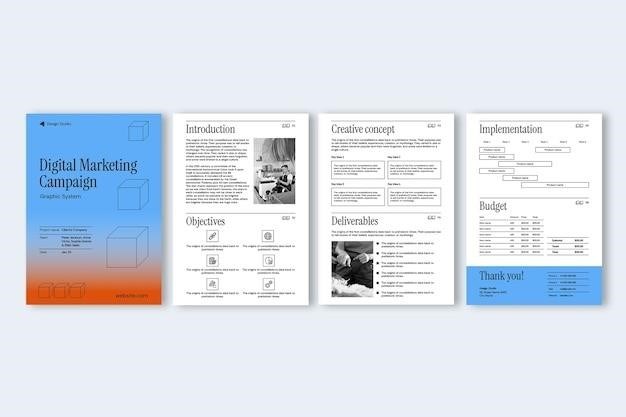club car troubleshooting guide pdf
The Club Car Troubleshooting Guide PDF is a comprehensive resource for resolving common golf cart issues. It covers maintenance tips, diagnostic steps, and repair advice, ensuring your Club Car runs smoothly and efficiently. Download now for quick solutions and expert guidance;

1.1 Overview of the Club Car Troubleshooting Guide PDF
The Club Car Troubleshooting Guide PDF is a detailed manual designed to help users identify and resolve common issues with their Club Car golf carts. It covers a wide range of topics, including electrical system problems, battery maintenance, and solenoid functionality. The guide is structured to provide step-by-step solutions, making it accessible for both novice and experienced users. Whether you’re dealing with a faulty starter motor or OBC-related issues, this resource offers practical advice to get your cart running smoothly. Key features include diagnostic steps, maintenance tips, and repair guidance, ensuring comprehensive coverage of potential problems. By following the guide, users can address issues efficiently, reducing downtime and extending the lifespan of their vehicle. It’s an essential tool for anyone looking to maintain or repair their Club Car golf cart effectively.
1.2 Importance of Regular Maintenance and Troubleshooting
Regular maintenance and troubleshooting are essential for ensuring your Club Car golf cart operates efficiently and reliably. Neglecting these practices can lead to reduced performance, unexpected breakdowns, and costly repairs. By addressing issues early, you can prevent minor problems from escalating into major ones. Proper upkeep extends the lifespan of your cart and maintains its value. Troubleshooting helps identify faults quickly, saving time and money. Key areas to focus on include battery health, electrical connections, and the On-Board Computer (OBC), which is critical for models from 1995 to 2014. Regular checks of battery terminals, wiring, and fuses can prevent common issues like a non-turning starter motor or charging problems. Refer to the Club Car Troubleshooting Guide PDF for detailed routines and diagnostic steps to keep your cart in optimal condition. Consistent maintenance ensures a smoother, safer, and more enjoyable driving experience.
1.3 How to Use the Guide Effectively
To maximize the benefits of the Club Car Troubleshooting Guide PDF, start by familiarizing yourself with its structure. Begin with the table of contents to quickly locate relevant sections for your specific issue. Always perform initial checks and pre-diagnostic procedures to rule out simple fixes like loose connections or blown fuses. For complex problems, follow the step-by-step troubleshooting provided for components like the starter motor or solenoid. Refer to the diagnostic tools section for guidance on using multimeters or the On-Board Computer (OBC). Prioritize safety precautions and use recommended tools to avoid damage or injury. If a repair is beyond your expertise, consult an authorized dealer or professional technician. Regularly review maintenance tips to prevent future issues and ensure your Club Car operates optimally. By following these steps, you can efficiently diagnose and resolve problems, extending your cart’s lifespan and performance.

Common Issues and Solutions

Address frequent problems like starter motor failure, solenoid issues, and battery charging faults. The guide provides clear solutions, ensuring your Club Car operates smoothly with minimal downtime and optimal performance always.
2.1 Starter Motor Does Not Turn
If the starter motor fails to turn, it can prevent your Club Car from starting. This issue is often linked to electrical or battery-related problems. Common causes include: a low or flat battery, loose or corroded battery terminals, faulty wire connections, a defective ignition switch, a blown fuse, or a malfunctioning solenoid. Additionally, a faulty accelerator switch or starter motor itself could be the culprit. To diagnose, start by checking the battery voltage and terminals for corrosion or looseness. Ensure all electrical connections are secure and test the ignition switch and fuses. If these steps don’t resolve the issue, inspect the solenoid and accelerator switch for proper function. If the problem persists, consider consulting a professional technician or referring to the Club Car troubleshooting guide PDF for detailed repair instructions. Regular maintenance can help prevent such issues, ensuring your golf cart operates reliably.
2.2 Solenoid and Electrical System Problems
Solenoid and electrical system issues are common in Club Car golf carts and can cause operational disruptions. A faulty solenoid may prevent the starter motor from turning, while electrical system problems can lead to inconsistent power supply. Common causes include loose or corroded connections, blown fuses, or damaged wires. To troubleshoot, inspect the solenoid for wear or damage and test its resistance. Check electrical connections for tightness and cleanliness. If the solenoid is faulty, replace it with a compatible model. For electrical issues, use a multimeter to identify voltage drops or short circuits. Ensure all fuses and circuit breakers are functioning properly. If problems persist, consult the Club Car troubleshooting guide PDF for detailed diagnostic steps. Addressing these issues promptly can prevent further damage and ensure reliable performance. Always follow safety guidelines when working with electrical systems.
2.3 Battery and Charging Issues
Battery and charging issues are common in Club Car golf carts, often causing operational problems. A low charge or flat battery can prevent the starter motor from turning, while loose or corroded battery terminals may disrupt electrical connections. Faulty wire connections or a blown fuse can also hinder charging. Additionally, a faulty solenoid or accelerator switch may affect battery performance. To address these issues, ensure terminals are clean and secure, check for damaged wires, and test the solenoid. If the problem persists, consult a professional technician. Regular maintenance, such as monitoring battery voltage and avoiding deep discharges, can prevent damage. Proper charging practices and storing the cart correctly during winter are also essential. Refer to the Club Car troubleshooting guide PDF for detailed diagnostic steps and repair advice to keep your cart running smoothly.
2.4 On-Board Computer (OBC) Related Issues

The On-Board Computer (OBC) in Club Car golf carts, particularly models from 1995 to 2014, can be temperamental and is often linked to charging issues. If the OBC stops functioning correctly, it may prevent the charger from working, even if the batteries are in good condition. Common problems include the OBC not recognizing the charger, displaying error codes, or causing the cart to shut down unexpectedly. These issues often arise from low battery voltage, faulty connections, or software glitches. To address OBC-related problems, ensure the batteries are fully charged and connections are clean. Resetting the OBC or updating its software may resolve some issues. If problems persist, consulting a professional technician is recommended, as improper handling can damage the system or batteries. Regular maintenance and proper storage can help prevent OBC-related issues from occurring in the first place.

Diagnostic Steps and Tools
Use the On-Board Computer (OBC) for initial diagnostics and system checks. Test electrical components, solenoids, and wiring. Ensure battery terminals are clean and connections are secure. Start with basic troubleshooting before advanced repairs.
3.1 Initial Checks and Pre-Diagnostic Procedures
Before diving into advanced troubleshooting, it’s essential to perform initial checks to identify obvious issues. Start by ensuring the battery is fully charged and terminals are clean and secure. Check for loose or corroded connections, as these can disrupt electrical flow. Inspect the ignition switch and accelerator for proper function. Verify that all fuses are intact and not blown. If the starter motor doesn’t turn, ensure the solenoid is functioning correctly. For models with an On-Board Computer (OBC), review its diagnostic codes to pinpoint problems. Always refer to the Club Car troubleshooting guide PDF for specific procedures. These preliminary steps can save time and help identify the root cause efficiently. By addressing basics first, you can avoid unnecessary complexity in the diagnostic process.
3.2 Using the On-Board Computer (OBC) for Diagnostics
The On-Board Computer (OBC) is a vital tool for diagnosing issues in Club Car golf carts, particularly models from 1995 to 2014. The OBC can display error codes and provide insights into electrical system malfunctions. To use it effectively, start by ensuring the cart is in “tow” mode to access diagnostic features. Check the battery voltage and connections, as low voltage can trigger false errors. If the OBC indicates a specific fault, refer to the troubleshooting guide to identify the cause, such as a faulty solenoid or charger malfunction. Regularly updating the OBC software and ensuring proper battery maintenance can prevent diagnostic errors. If issues persist, consult a professional technician familiar with Club Car systems. Remember, the OBC is sensitive, so avoid sudden voltage drops to prevent damage. By leveraging the OBC’s diagnostic capabilities, you can efficiently identify and resolve problems, ensuring your cart runs smoothly.
3.3 Testing Electrical Systems and Components
Testing electrical systems and components is crucial for diagnosing issues in your Club Car. Start by inspecting the battery terminals for corrosion or looseness, as these are common causes of electrical failures. Check the solenoid, accelerator switch, and ignition switch for proper function. Use a multimeter to test voltage and continuity in wires and connections. Ensure all fuses are intact and not blown. If the starter motor doesn’t turn, verify the solenoid’s operation and check for faulty wiring. For models with an On-Board Computer (OBC), ensure it is functioning correctly, as it controls charging and battery protection. Testing these components systematically helps identify the root cause of electrical problems. Always refer to the Club Car troubleshooting guide PDF for detailed procedures and safety precautions. Regular testing prevents minor issues from escalating into major repairs, ensuring your golf cart runs reliably.
Maintenance Tips for Preventing Issues

Regular inspections and timely repairs prevent major issues. Clean battery terminals and connections for reliable electrical performance. Check fluid levels and tire pressure for optimal operation. Store your cart properly to protect it from damage.
4.1 Routine Maintenance Checks
Regular maintenance is crucial for ensuring your Club Car golf cart operates efficiently and reliably. Start by inspecting the battery terminals for corrosion or looseness, as this can disrupt electrical connections. Check the wiring and connections for any signs of damage or wear, as faulty wires can lead to unexpected issues. Additionally, monitor the tire pressure and ensure it matches the recommended levels to maintain proper handling and performance. Inspect the brakes for wear and test their functionality to ensure safety. Finally, review the On-Board Computer (OBC) for any error codes or alerts, addressing them promptly to prevent further complications. By performing these routine checks, you can identify and resolve potential problems before they escalate, ensuring your Club Car remains in optimal condition. Always reference the Club Car troubleshooting guide PDF for detailed instructions and guidelines specific to your model.
4.2 Battery Care and Maintenance
Proper battery care is essential for maintaining your Club Car’s performance and longevity. Regularly inspect the battery terminals for corrosion or looseness, as these can disrupt power supply. Clean terminals with a wire brush and apply a protective coating to prevent future corrosion. Avoid overcharging, as it can damage the batteries. Ensure the charger is compatible with your Club Car model and follows the recommended charging procedures. For lead-acid batteries, check the water levels monthly and top them up with distilled water as needed. Equalize the batteries every 6 months to balance the voltage across all cells. Store the cart in a cool, dry place during winter, and keep the batteries charged to prevent deep discharge. Inspect battery cables for signs of wear or damage and replace them if necessary. Proper maintenance will extend the life of your batteries and ensure reliable performance. Always refer to the Club Car troubleshooting guide for specific instructions tailored to your model.
4.3 Proper Storage and Winterization
Proper storage and winterization are crucial for maintaining your Club Car’s performance and longevity. Start by ensuring the battery is fully charged and protected from extreme temperatures. Clean the cart thoroughly, removing dirt and debris that could cause corrosion. Store the vehicle in a dry, sheltered area to prevent moisture damage. For winterization, disconnect the battery and use a trickle charger to maintain charge levels. Check and tighten all electrical connections to prevent corrosion. Inflate tires to the recommended pressure to avoid flat spots. Cover the cart to protect it from dust and pests. Avoid using the cart in freezing temperatures to prevent battery and electrical system damage. Regularly inspect stored vehicles to ensure no issues arise during downtime. By following these steps, you can ensure your Club Car remains in optimal condition when not in use.

Advanced Troubleshooting Techniques
Master advanced methods for diagnosing complex issues in your Club Car. Learn expert techniques for electrical system repairs, solenoid testing, and using diagnostic tools like multimeters. Consult the guide for detailed step-by-step instructions.
5.1 Repairing Electrical Systems
Repairing electrical systems in your Club Car requires careful diagnosis and attention to detail. Start by identifying faulty components such as the solenoid, wiring, or connections. Use a multimeter to test voltage and resistance, ensuring all circuits function properly. Corrosion or loose terminals can disrupt power flow, so clean and tighten connections as needed. If the solenoid fails to engage, it may need replacement. Always refer to the Club Car troubleshooting guide PDF for specific instructions and diagrams. For complex issues, such as OBC-related problems, consult a professional technician to avoid further damage. Regular maintenance, like inspecting wires and fuses, can prevent electrical faults. Download the guide now for detailed repair advice and ensure your Club Car operates reliably. Remember, proper tools and safety precautions are essential when working with electrical systems.

5.2 Solenoid Replacement and Testing
The solenoid is a critical component in Club Car golf carts, often linked to electrical system issues. If the solenoid fails, the cart may not start or function properly; Testing the solenoid involves checking for continuity and voltage drop. If faulty, replacement is necessary. To replace, disconnect the battery, remove the solenoid mounting screws, and disconnect the wiring harness. Install the new solenoid securely, ensuring proper connections. Testing after replacement involves checking the cart’s operation under load. If issues persist, consult a professional technician. Regular maintenance and inspections can prevent solenoid failures. Always refer to the Club Car troubleshooting guide PDF for detailed steps and safety precautions. Proper solenoid function ensures reliable performance and longevity of your golf cart.
Resources and References

Access the Club Car troubleshooting guide PDF for detailed repair manuals and user guides. Contact authorized dealers for printed copies or professional assistance. Download now for expert solutions and maintenance tips.
6.1 Downloading the Club Car Troubleshooting Guide PDF
Downloading the Club Car Troubleshooting Guide PDF is a straightforward process that provides instant access to essential repair and maintenance information. This guide is available online and can be downloaded for free or purchased as a printed copy through authorized dealers. It includes detailed troubleshooting tips, repair advice, and maintenance schedules to keep your Club Car golf cart in optimal condition. Visit the official Club Car website or trusted third-party resources to find the latest version of the guide. Ensure you select the correct manual for your specific Club Car model, as instructions may vary. For additional support, contact your local authorized Club Car dealer for assistance with downloads or to purchase printed materials. This guide is a valuable resource for both DIY enthusiasts and professional technicians, offering comprehensive solutions to common issues. Download now and resolve problems efficiently!
6.2 Authorized Dealers and Professional Help
For complex issues or when troubleshooting steps don’t resolve the problem, consulting an authorized Club Car dealer is highly recommended. These professionals have extensive knowledge and access to genuine parts, ensuring repairs are done correctly and safely. They can also provide guidance on maintenance and upgrades, helping to extend the lifespan of your golf cart. Additionally, authorized dealers offer access to official manuals, parts lists, and diagnostic tools, making them a valuable resource for both routine care and advanced repairs. If you’re unsure about a repair or lack the tools and expertise, reaching out to a certified technician is the best course of action. Visit the Club Car website to locate your nearest authorized dealer and ensure your vehicle receives the professional attention it needs.
In conclusion, the Club Car Troubleshooting Guide PDF is an essential tool for golf cart owners seeking to resolve common issues efficiently. By following the outlined diagnostic steps, maintenance tips, and repair advice, you can ensure your Club Car operates smoothly and lasts longer. Regular checks and proper care, such as monitoring battery health and addressing electrical problems early, are key to preventing major issues. If you’re unsure about any step or if a problem persists, consulting a professional technician is highly recommended. Download the guide today to access detailed solutions and keep your golf cart in optimal condition. Remember, proactive maintenance and timely repairs will save you time and money in the long run. Happy troubleshooting!


















































